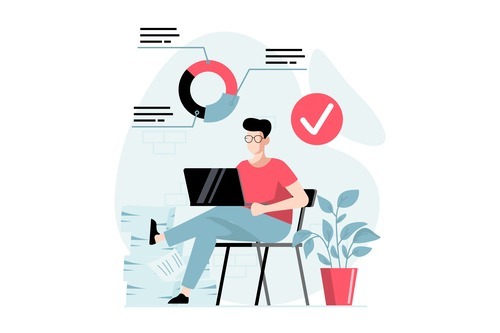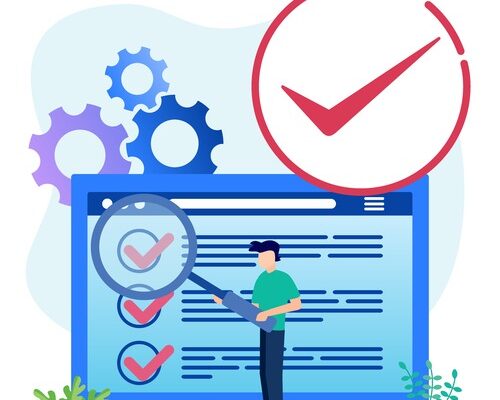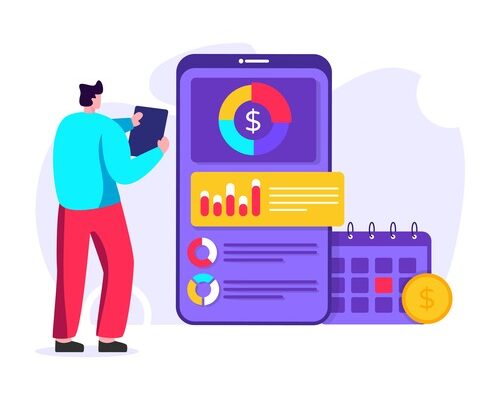Do you find yourself tempted to overload your app with features, unsure which ones are truly essential for your Minimum Viable Product? Have you imagined users struggling with a slow and unresponsive interface? Are you confident that your application can scale smoothly as your user base grows, or is scalability something you have not fully planned for? And are you certain that your users’ data is secure?
These questions are critical when entering the world of mobile app development. Addressing them early helps you avoid common pitfalls that can delay progress and affect the success of your project.
At Mallow, our experienced team has worked across multiple industries to build innovative and user-focused applications. We have guided many clients through the challenges that typically arise during the MVP stage, helping them make the right decisions at the right time.
By the end of this article, you will gain a clear understanding of how to strike the right balance when building a Minimum Viable Product that meets user needs while supporting future growth. You will learn how to avoid common mistakes such as feature overload, performance issues, and scalability challenges. The article also provides practical strategies to help you build a strong and reliable foundation for future iterations.
What is MVP, and why should I use one when developing an application?
MVP stands for Minimum Viable Product. It refers to a version of a product that includes only the essential features needed to serve early adopters and gather meaningful feedback for future development.
According to Gartner, an MVP is used to validate customer needs and market demand before investing in a fully featured product. This approach helps reduce development time, effort, and risk.
The main goal of an MVP is to release a functional product quickly, test its viability in real-world conditions, and collect user feedback. These insights then guide future improvements and feature enhancements.
As we move into 2024, the MVP approach continues to be highly relevant and valuable for several reasons:
✅ Faster time to market – Quickly launch a basic version for immediate market entry.
✅ Cost efficiency – Minimize expenses by focusing on essential features, ensuring resource optimization.
✅ Reduced risk of failure – Mitigate risks through incremental development, addressing issues early in the process.
✅ Focus on core value – Concentrate on essential functionalities, emphasizing the product’s core purpose.
✅ Iterative development – Continuously refine and enhance the application based on evolving requirements and user feedback.
✅ User feedback and validation – Engage users early for valuable insights, refining the MVP based on real-world usage.
✅ Adaptability to market changes – Stay responsive, adapting features swiftly to align with dynamic market demands.
What are some common mistakes to be mindful of when developing an MVP for a mobile application?
Skipping market research
When developing an MVP for a mobile application, one critical mistake is skipping market research. In fact, according to CB Insights’ analysis of startup failures, one of the top reasons startups fail is due to building products with no market need. Neglecting to understand your target audience, their needs, and the competitive landscape can lead to a product that misses the mark

Solution
To avoid this, conduct thorough market research:
- Define your target audience – Clearly identify the demographics, preferences, and pain points of your potential users. This knowledge is fundamental in tailoring your MVP to meet their specific needs.
- Analyse competitor offerings – Study competitors to understand what works well in similar apps and identify gaps or areas for improvement. This ensures your MVP is competitive and brings additional value to users.
- Validate market demand – Before diving into development, validate the demand for your app idea. Utilise surveys, focus groups, or landing pages to gauge interest and collect valuable feedback.
- Understand user behaviours – Analyse user behaviours and trends within your target market. This insight helps in designing features that resonate with users and align with their expectations.
- Iterate based on feedback – Incorporate market feedback into your MVP’s development. Stay flexible and be willing to iterate based on real-world responses to ensure your product remains aligned with market needs.
Not Defining Clear Goals

A common mistake in MVP development is the lack of a clear goal in mind. Unclear objectives can lead to feature bloat, confusion, and an MVP that fails to address core user needs.
Solution
To avoid this, follow these practical steps:
- Establish Clear Objectives – Clearly define the primary goals of your MVP. Identify the specific problem your app aims to solve and the key features that will address it. Ensure that each feature aligns with your overarching goals.
- Prioritise Features – Rank features based on their importance in achieving your goals. Focus on the essential functionalities that directly contribute to solving the identified problem. This helps in avoiding unnecessary complexity in the initial release.
- Set Measurable Milestones – Break down your goals into measurable milestones. Define key performance indicators (KPIs) that allow you to assess the success of your MVP objectively. This ensures a data-driven approach to evaluating its effectiveness.
- Communicate Clearly Across Teams – Ensure that everyone involved in the development process, from developers to stakeholders, understands and aligns with the defined goals. Clear communication fosters a shared vision and helps in avoiding feature creep.
Overcomplicating features

Overcomplicating features in an MVP can lead to increased development time, user confusion, and a product that deviates from its core purpose.
Solution
To avoid this common mistake, consider the following practical strategies:
- Identify Core Features – Clearly distinguish between core features that directly address the main problem and supplementary features. Prioritize the development of essential functionalities that form the backbone of your MVP.
- Minimal Viable Features – Embrace the concept of a “Minimal Viable Feature.” Ask yourself what features are absolutely necessary for the initial release to solve the identified problem. Limiting features to the essentials streamlines development and user interaction.
- Iterative Development – Adopt an iterative development approach. Start with a basic version of the features, gather user feedback, and refine them in subsequent iterations. This allows for gradual improvement without overwhelming the initial release.
- User Feedback Loop – Establish a feedback loop with users early in the development process. Regularly seek input on features and functionalities to ensure they align with user expectations and needs.
Check if your concept is working

A crucial mistake in MVP development is neglecting to validate the viability of your app concept early on.
Solution
Ensuring that your idea resonates with users is pivotal for success. Here’s how to avoid this misstep:
- Build a Prototype – Before investing significant resources, create a prototype or a mockup of your app to visually represent its core functionalities. This allows you to test the concept without extensive development.
- Conduct User Testing – Gather a small group of target users to interact with your prototype. Observe their reactions, collect feedback, and assess whether your app concept effectively addresses their needs.
- Run Surveys and Focus Groups – Leverage surveys and focus groups to gather qualitative and quantitative data on your app concept. Understand user expectations, preferences, and any potential reservations they may have. Actively incorporate user feedback into your concept refinement process. Be willing to iterate and make adjustments, ensuring that your app concept evolves based on real-world responses.
Not clearly defining the type of testing to be done

To build a reliable and user-ready app, it is important to follow a structured testing strategy designed specifically for mobile environments. Referring to Android’s official app testing guide can help you understand how to test mobile applications effectively throughout the development process.
Without a clear testing approach, issues that could have been identified early may surface later, leading to higher costs and longer timelines. Failing to define the right type of testing for your MVP often results in weak quality assurance and overlooked problems that affect performance and user experience.
Solution
Here are practical steps to help you avoid this mistake.
Not every type of testing is required for every application. The testing methods you choose should align with your MVP’s goals and technical requirements. Tailor your testing strategy to suit the unique nature of your mobile app, focusing on the areas that matter most, such as core functionality, user experience, performance, and scalability.
- Comprehensive test plan – Develop a detailed test plan that clearly outlines the types of testing required, such as functionality testing, usability testing, performance testing, security testing, and scalability testing. Tailor the plan to your app’s specific needs.
- Set testing Objectives – Clearly define the objectives of each testing phase. Whether it’s identifying bugs, evaluating user experience, assessing performance under various conditions, ensuring security, or testing scalability, having specific goals ensures comprehensive testing coverage.
- User Acceptance Testing (UAT) – Prioritise UAT to get feedback directly from end-users. This step helps validate whether the app meets user expectations and identifies any usability issues that might have been overlooked.
- Some commonly used testing – In software development, we employ various testing methods like automated, performance, security, scalability, and iterative testing to ensure a high-quality and resilient product.
Failure to plan for iterations

A critical oversight in MVP development is the failure to plan for iterations, which can hinder the adaptability and evolution of your mobile application. According to Forrester’s 2024 report on application development, adopting iterative development practices, such as agile methodologies, is essential for continuous improvement and aligning the product with evolving user needs.
Solution
Here’s how to avoid this mistake with practical strategies:
- Embrace an iterative approach – Acknowledge that an MVP is a starting point, not the final product. Plan for iterative development cycles, allowing room for continuous improvement based on user feedback and changing requirements.
- Set clear iteration goals – Define clear goals for each iteration. Whether it’s improving user engagement, addressing performance issues, or introducing new features, having specific objectives guides the iterative development process.
- Collect User Feedback Early – Integrate mechanisms for collecting user feedback from the MVP launch. This feedback becomes the cornerstone for subsequent iterations, ensuring your app aligns closely with user expectations.
- Prioritise Feature Enhancement – Based on user feedback and data analytics, prioritise features that require enhancement or modification in subsequent iterations. This approach ensures that your app evolves in a way that genuinely addresses user needs.
- Flexible Development Timeline – Plan a flexible development timeline that accommodates iterative cycles. Avoid rigid schedules that hinder your ability to incorporate valuable insights gained during the MVP’s initial deployment.
- Data-Driven Decision Making – Leverage user data and performance metrics to decide which features to enhance, remove, or introduce in subsequent iterations. A data-driven approach ensures that your iterations are purposeful and effective.
- Communication across teams – Promote open communication between development, design, and product teams. Ensure that insights from each team are shared to inform the iterative process effectively.
Misinterpreting budget and timeline

Misinterpreting the budget and timeline for MVP development is a prevalent mistake that can lead to compromised quality and delayed releases.
Solution
Here’s how to avoid this mistake with practical strategies:
- Comprehensive initial assessment – Conduct a thorough analysis to estimate both the financial and time requirements accurately. Consider factors such as development complexity, desired features, and potential challenges.
- Buffer for unforeseen challenges – Allocate a contingency buffer within your budget and timeline to account for unexpected challenges, revisions, and unforeseen issues that may arise during the development process.
- Prioritise features strategically – Clearly define and prioritise features based on their importance to the MVP’s core functionality. This strategic approach allows you to allocate resources more efficiently and ensures timely delivery of essential functionalities.
- Regular progress assessments – Conduct regular progress assessments to identify any deviations from the initial timeline or budget. Early detection of issues enables prompt corrective actions and prevents the escalation of problems.
- Transparent reporting – Maintain transparency in reporting progress and challenges to stakeholders. This helps manage expectations and ensures that all parties involved are aware of the project’s status, allowing for informed decision-making.
- Consider external expertise – If necessary, consider seeking the expertise of external consultants or development agencies. Experienced professionals can provide realistic assessments and guidance, helping you avoid common pitfalls associated with budget and timeline underestimation.
How much does it cost to build a mobile application?

By now, you have a solid understanding of the common pitfalls that arise during mobile application MVP development and the strategies to avoid them.
As a next step, you may be wondering about the actual cost of building a mobile application. To gain deeper clarity, explore our article on mobile application development costs, where we break down the key factors involved and provide detailed cost insights to help you plan effectively.
Still unsure about from where you need to take your next step? Feel free to reach out to our team.
Your queries, our answers
Mobile application development involves creating software applications designed to run on mobile devices like smartphones and tablets. These apps can be native (built specifically for iOS or Android), cross-platform (designed to work on multiple platforms), or hybrid (combining elements of both).
Our mobile app development process includes the following stages: requirement gathering and analysis, design and prototyping, development and coding, testing and quality assurance, deployment, and post-launch support. Each stage is crucial to delivering a high-quality application.
To gain deeper insights into the experience of working on a mobile project with Mallow, explore more details here.
The choice between native and cross-platform development depends on your project’s goals, budget, and target audience. Native apps offer better performance and a more tailored user experience, while cross-platform apps allow for faster development and lower costs by using a single codebase for multiple platforms. For a detailed comparison of Native vs. Hybrid development, explore our comprehensive analysis to help you make an informed choice.
Mallow develops mobile apps for iOS, Android, and cross-platform solutions. We use the latest technologies and frameworks to ensure your app performs optimally on the platforms that matter most to your users.
Choosing the right features for your mobile app depends on understanding your target audience, business goals, and budget. We work closely with you to prioritize features that will provide the most value to your users and align with your business objectives.
At Mallow, we offer ongoing app maintenance and updates as part of our post-launch services. This includes regular updates to improve performance, add new features, and ensure compatibility with the latest operating systems. For more details, get in touch with our team.
Yes, Mallow assists with the entire app store submission process, including meeting the guidelines for Apple’s App Store and Google Play. We ensure your app is ready for submission and provide support to help it get approved.
Mallow uses a variety of technologies and frameworks for mobile app development, including Swift and Objective-C for iOS, Kotlin and Java for Android, and React Native and Flutter for cross-platform development. Our technology choices are driven by the specific needs of your project.
Our testing process includes functional testing, performance testing, security testing, usability testing, and compatibility testing across different devices and operating systems. We ensure your app is bug-free and performs optimally before it goes live.
The cost of developing a mobile app depends on several factors, including the app’s complexity, features, platform (iOS, Android, or both), and the development team’s expertise. Costs can range from $10,000 to $150,000 or more. To know more, check out how much it costs to work on a mobile project with us.
The development timeline for a mobile app varies depending on the complexity of the project. A basic app may take 2-4 months to develop, while a more complex app with advanced features can take 6-12 months or longer.
Choosing the right features for your mobile app depends on understanding your target audience, business goals, and budget. We work closely with you to prioritize features that will provide the most value to your users and align with your business objectives.
Yes, Mallow offers comprehensive post-launch support, including monitoring, updates, bug fixes, and enhancements. We ensure your app remains up-to-date and continues to perform well after it’s launched.
A mobile app can enhance customer engagement, increase brand visibility, provide better service through personalized experiences, and create new revenue streams. It also allows you to reach a broader audience by making your services more accessible on mobile devices.
Getting started with Mallow is easy! Simply reach out to us to discuss your project. We’ll work with you to understand your goals, define your requirements, and create a development plan that meets your needs. Let’s bring your mobile app idea to life!.
Security is a top priority at Mallow. We implement advanced security measures, including encryption, secure authentication, and regular security audits, to protect your app from potential threats and ensure data integrity.
To learn more about how we handle and implement these security measures, check out more details here.
Author
Yogesh Murugesh
Yogesh is an accomplished Senior Technical Lead at Mallow, boasting over 11 years of invaluable expertise in the realm of application development. With an extensive background spanning diverse domains, he has consistently delivered applications of the highest calibre. Yogesh's commitment to quality and excellence shines through in every project he undertakes. His career journey is marked by a proven track record of successfully crafting applications that not only meet but often exceed industry standards. His ability to navigate through various domains showcases his adaptability and keen problem-solving skills. Yogesh's contributions have consistently played a pivotal role in driving technological innovation and advancement within his field. Beyond his professional pursuits, Yogesh finds solace and joy in various activities. An ardent cricket enthusiast, he embraces the team spirit and strategic thinking that the sport demands. During leisure moments, he indulges in watching movies, allowing himself to be captivated by different narratives and genres. Moreover, Yogesh cherishes quality time with his child, relishing the role of a devoted parent.



